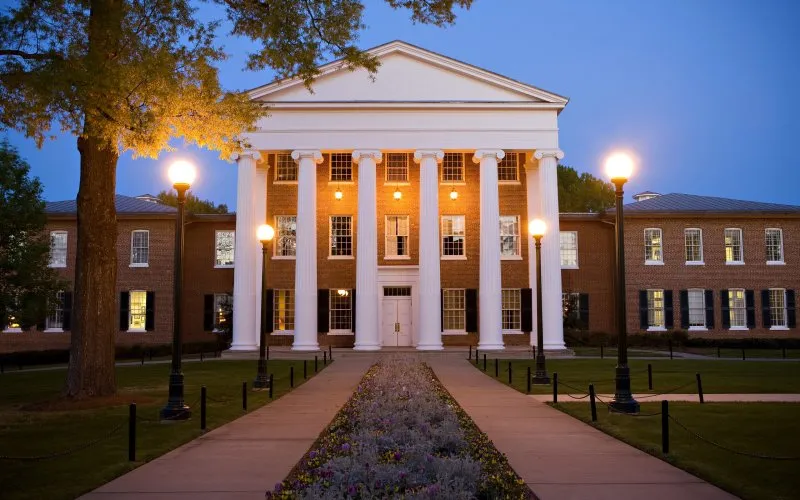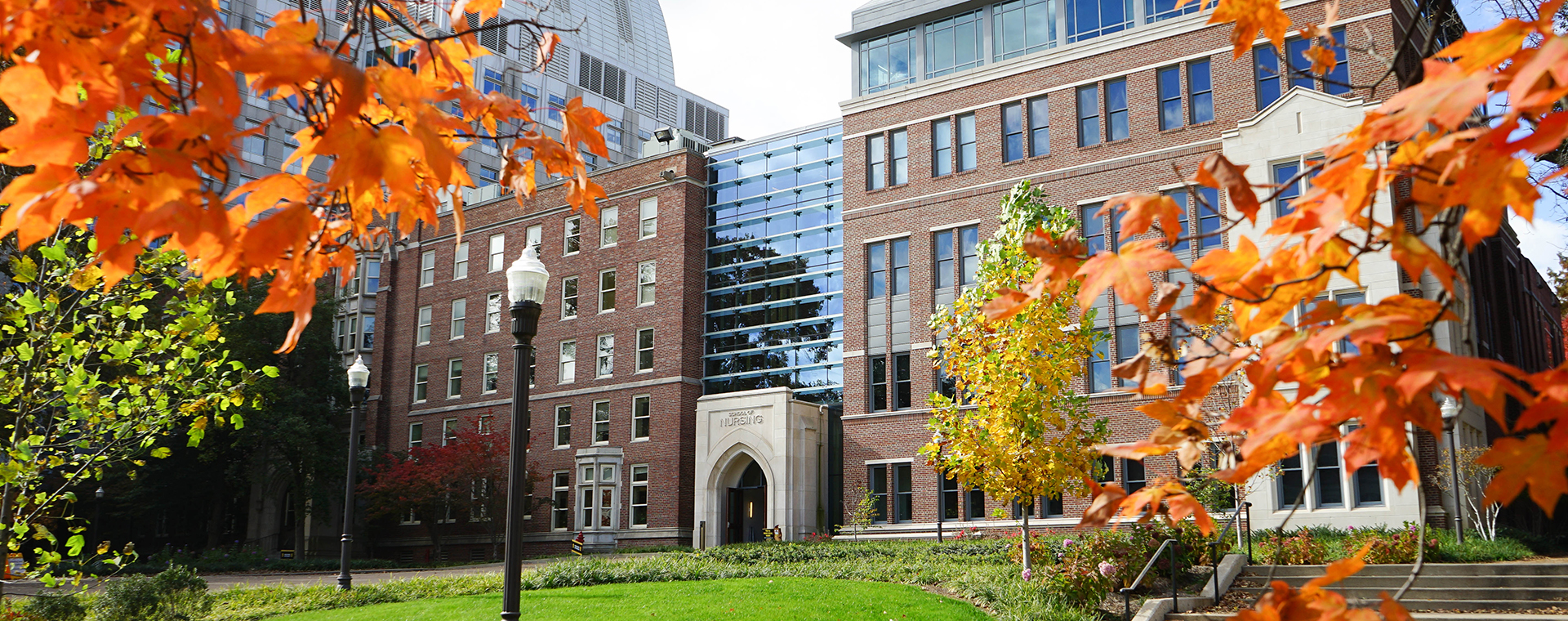Harvard Acceptance Rate & How To Get Into Harvard University
Harvard Acceptance Rate & How To Get Into Harvard University. In this article, You will know harvard gpa requirements, harvard transfer acceptance rate, harvard mba acceptance rate, harvard law acceptance rate And More.

About Harvard University
Harvard University is the dream of students all over the world, not just in the United States. The competition for admission to Harvard, on the other hand, is fierce, as you’ll be up against some of the best students on the planet. As a result, you must learn about Harvard University’s acceptance rate, GPA, and admission requirements in order to improve your chances of being accepted. According to Times Higher Education, Harvard University is the most employable university in the world in 2019.
This means that if you apply for a job with a Harvard degree anywhere in the world, you will almost certainly be given first consideration. This isn’t just due to the prestige of the name ‘Harvard.’ It’s also due to the fact that Harvard has consistently produced exceptional graduates through its academic curriculum. This is one of the many reasons why students flock to Harvard University like mice to cheese, among many others.
So, what are the other reasons why you should join the Harvard University admissions fight? If you read this article all the way to the end, you’ll find out. You’ll also learn about the acceptance rate for the class of 2023 at Harvard University and the requirements for admission in 2023.
See Also: Cheap Universities in Canada For International Students
What are the Benefits of Attending Harvard University?
Harvard is one of the United States’ eight (8) Ivy League research universities. Universities in the United States known for their history, influence, wealth, and academic reputation are known as Ivy League universities. Harvard is the oldest university in the United States. So, can you imagine what it’s like to study at America’s oldest university, knowing that eight (8) US presidents and 188 billionaires studied there as well? It’s unimaginable, and if you’re a sucker for following in the footsteps of great men, you’ll go to any length to get into Harvard.
Harvard’s academics are distinguished by the presence of internationally renowned faculty members. It also has cutting-edge resources, and the faculty uses an individualized instruction system to deliver instruction. As a result, Harvard has a student-to-faculty ratio of 6:1. When you need them, you have complete access to the faculty members. What’s even more intriguing is that Harvard provides an unrivaled education at a reasonable cost.
Harvard’s financial aid program makes Harvard accessible to families from all over the world. Families with incomes of $65,000 or less are not required to take out loans or contribute to their child’s education under this package. Families with incomes between $65,000 and $150,000, on the other hand, will contribute anywhere from 0 to 10% of their income. Depending on their circumstances, families earning more than $150,000 will pay proportionately more than 10% of their income.
This ensures that students from low-income families can study at the same level as students from higher-income families without having to worry about money. Furthermore, while at Harvard University, you can apply for a variety of Harvard University scholarships.
Undergraduate Acceptance Rate at Harvard University
You’ve probably heard that Harvard University is a highly selective institution. If you’re wondering what this means, it simply means that Harvard University accepts only a small percentage of the students who apply each year. The acceptance rate for the class of 2023, which includes students admitted in 2018, was 4.7 percent. The breakdown of this percentage is that Harvard University only accepted 2,024 of the 42,749 applications it received.
Harvard University currently has a 4.6 percent acceptance rate. This is for students admitted to the class of 2023 for the academic year 2021-22. Only 2,009 of the 43,330 students who applied to Harvard were accepted. When comparing the class of 2023 to the class of 2023, you’ll notice that Harvard University’s acceptance rate is decreasing. This means that getting into Harvard University is becoming even more difficult. We’ll go over the requirements for admission to Harvard University, but first, let’s get to know the class of 2023.
See Also: Top 20 Countries With The Best Educational System In The World
What Are the Students in The Class of 2023 Like?
There’s always the rumor that a certain school is racist or only accepts students from a specific geographic area. Harvard has been chastised for the ethnic diversity of its students. Critics claim that Harvard only accepts a small percentage of Asian Americans who are among the highest-achieving students in the United States. Let’s take a look at how students are represented at Harvard University while the case is still in court.
Ethnicity of the Class of 2023
We refer to the racial diversity of Harvard’s class of 2023 as ethnicity. The ethnic breakdown of Havard’s 2023 class is shown below in percentages.
- African American – 14.3%
- Asian American – 25.3%
- Hispanic or Latino – 12.2%
- Native American – 1.8%
- Native Hawaiian – 0.6%
Geographical Distribution of the Class of 2023
By geographic location, we mean the regions of the United States from which the students in Harvard’s class of 2023 hail. This section also shows the percentage of International Students who come from other parts of the world.
- New England – 16.6%
- Middle Atlantic – 21.8%
- South – 19.6%
- Midwest – 9.9%
- Central – 2.0%
- Mountain – 2.8%
- Pacific – 14.3%
- Territories – 0.3%
- International – 12.8%
According to the data above, international students make up 12.8 percent of the class of 2023. This is a good percentage for students applying from outside the United States. So, despite Harvard’s competitive admissions process, if you work hard as an international student, you might be able to get in under the 12.8 percent next year. Who knows, by then, the percentage of international students may have risen.
Areas of Study for the Class of 2023
This section discusses the fields of study that students in the class of 2023 plan to major in at Harvard University. They are as follows:
- Humanities accounted for 15.7 percent of the total.
- Social sciences accounted for 24.5 percent of the total.
- Biological Sciences accounted for 18.4 percent of the total.
- Physical sciences accounted for 7.4 percent of the total.
- 12.3% of the population works in engineering.
- Computer Science accounted for 8.3% of the total.
- 7.1 percent math
- 6.4 percent are undecided.
With a percentage of 24.5 percent, Social Sciences is the most popular. This demonstrates that students are most familiar with Havard University’s social science majors. Are you looking for one of the best undergraduate degrees in the field of social science? Harvard University may be the best place for you to send your application.
Review of Harvard University’s Undergraduate Admissions
We know that Havard operates to the highest standards and is therefore interested in high-achieving students; however, is this true? Is it true that only students who meet the admissions requirements and merit admission are admitted to Havard? Do they choose students based on their skin color? The data for the admitted class of 2023 above helps to answer these questions, but it doesn’t change what critics have discovered and for which Harvard has been sued.
The federal lawsuit against Harvard University claims that the university’s admissions policies discriminate against Asian Americans, who are overrepresented among students with high academic achievement. However, no evidence of explicit racial bias was found in a 2021 district court decision on this case. Despite this, they identified a small amount of implicit bias. Critics also pointed out that Harvard University prioritized white and wealthy children of Harvard alumni, employees, and donors when it came to admissions.
According to a study published in Quartz, 43 percent of white students admitted through the Dean’s Interest List between 2014 and 2019 were children of alumni or employees, relatives of donors, or recruited athletes. If it hadn’t been for their special status, the researchers believe that three-quarters of these students would have been rejected by Harvard University. Despite these criticisms, Harvard still admits students on the basis of merit, and in the next section, you’ll learn what you need to do to be considered for admission.
Harvard University’s Undergraduate Admissions
Prior to 2007, Harvard offered an Early Admission program that allowed students to apply earlier in the year and receive their results sooner. This plan has been criticized for putting low-income and under-represented minority applicants at a disadvantage. Harvard University’s Early Action and Regular Decision programs are currently in place. Candidates who apply for Early Action must do so by November 1 and will hear from the university by mid-December.
On the other hand, Regular Decision candidates must apply by January 1 and receive notification from Harvard by late March. Regardless of which admission plan you choose, the application timeline will allow you to compare other colleges‘ admission and financial aid offers. This is due to the fact that you have until May 1 to make your college decision. Do you want to know if the application procedures for both admission plans are different? No, you will have to submit the same documents for both types of Harvard University applications.
Harvard University Admissions Requirements For Undergraduates
So, what do you need for your Harvard University first-year application? You must complete the Common Application, the Universal College Application, or the Coalition Application if you are a prospective US student in the United States or an international student seeking admission to Harvard University. For undergraduate admission to Harvard University, you will submit any of these along with the following documents:
- Harvard College Questions for the Common Application, Coalition Application, or the Universal College Application Harvard supplement
- $75 fee (or request a fee waiver)
- ACT or SAT (with or without writing)
- 2 SAT Subject Tests (recommended, except in the case of financial hardship)
- Optional: AP or other examination results
- School Report and high school transcript
- Two Teacher Report
- Midyear School Report (after your first semester grades)
- Final School Report (for admitted students only).
You’ll find a button at the bottom of this section that will take you to the full Harvard application requirements, but first, let’s go over the most difficult parts of the application.
Midyear School Report
Harvard University requires your midyear school report for them to evaluate your performance during the first half of your senior year coursework. This is not your transcript, and it will be completed by your school counselor or another official from the school. You are not required to submit the midyear report by the November 1 deadline if you apply for Harvard Early Action admission. If you applied for Early Action and were deferred to Regular Decision, you must submit your midyear report and transcript in February or as soon as your midyear grades become available.
Harvard expects your school to send predicted grades based on your current classroom work for international students studying the IB or A-level curriculum. Your school should also send any internal or mock exams you’ve taken up to that point. There is no need to submit the midyear report form if your school does not issue official or predicted midyear grades for your final year of school.
Finally, you do not need to submit a midyear report if you have already graduated from high school. If you haven’t already, simply request that your school send your final school report.
See Also: Top 10 UK Scholarships For Nigerian Students (Study Abroad)
Teacher Evaluations
Harvard University requires two teacher evaluations. You must have two teachers from two different academic subjects complete the Teacher’s Evaluation forms on your behalf. These teachers must be very familiar with you. Meanwhile, if you wish, you can submit additional letters of recommendation. But only after you’ve submitted your application will you be able to do so. You’ll be given a unique link to send to your referrers.
Final School Report and Transcripts
For Harvard University admissions, your final school report and transcript are required. If you are offered admission to the university and decide to accept it, you must submit a Final School Report and transcript as soon as your final grades are available. That is, by July 1st, at the latest. If your school has access to these submission options, a school counselor or other school official will complete and send the Final School Report and transcript through Parchment/Docufide or Scrip-Safe International.
If you’re an IB student, you’ll need to submit your final grades as soon as they’re available in mid-July. Meanwhile, Harvard expects to receive your final A-level results by mid-August for A-level students. Harvard requires you to submit either the ACT or the SAT, with the option of including or excluding the writing component. So, if you’re going to submit Subject Tests, for example, choose only one mathematics test instead of two. On the other hand, a Subject Test in your first language may not be very useful if your first language is not English.
In addition, only submit test results from the last three years. While Harvard recommends two SAT Subject Tests, you may apply for admission without them if the cost of taking the tests would be prohibitively expensive for you or if you would prefer Harvard to consider your application without them.
Test Score Cut Off
Do you want to know if Harvard has cutoffs for its standardized tests? On the other hand, Harvard has stated that there are no score cutoffs. Harvard University will evaluate your highest composite score and any other score you choose to share with them for the ACT, but they do not admit “by the numbers.” When reviewing your grades, the school will also consider your educational background. Here’s everything you need to know about Harvard University’s undergraduate admissions requirements:
What are the SAT, ACT, and GPA requirements for Harvard?
On their First-Year Application Requirement page, Harvard University stated explicitly that there are no test score cutoffs. You don’t expect to get into Harvard University by scoring poorly on the ACT or SAT. So, what are the ACT, SAT, and GPA scores of a typical Harvard student? Here are the successful applicants’ SAT and ACT scores, as well as their average GPA, according to Harvard’s Common Common Data for the admitted class of 2023:
- SAT Scores – 720-780 for reading and writing and 740-800 for math
- ACT Composite Score – 33-35
- High School GPA – 4.18
Prepscholar agrees with these figures and adds them up for a composite SAT score of 1510 on a 1600-point scale. The 25th percentile of students applying to Harvard has a score of 1460, while the 75th percentile has a score of 1580. Your application will benefit from a score of 1580. On the other hand, Harvard has an average ACT score of 34. So, if you have a GPA of 4.2 and a SAT score of 1510 or an ACT score of 34, you’ve almost guaranteed yourself a spot at Harvard.
All you have to do now is meet the other Harvard admissions requirements.
What are Harvard University’s Other Selection Criteria?
While Harvard University places a premium on academic achievement, being a high-achieving student does not make you a “Typical Harvard Student”; there is no such thing. This is due to the fact that when it comes to selecting students for admission to Harvard, there are several other factors to consider. The following is a complete list of what Harvard looks for in a prospective student:
- Growth and Potential: High academic and personal potential is included in growth and potential.
- Interests and Activities: Intellectual, extracurricular, and personal activities are all included in your interests and activities.
- Personal Character: Your leadership abilities, self-confidence, sense of humor, and concern for others are all part of your personal character.
- Contribution to the Harvard Community: This refers to what you can offer the school, the community in which it is housed, and your fellow Harvard students.
As you can see, meeting high academic standards is just one of Harvard’s admission requirements. According to the other requirements listed above, to pass the Harvard University admissions process, you must be a “whole student,”.
See Also: Apply For Erasmus Mundus Scholarship | Fully Funded
Harvard Acceptance Rate Early Decision
Moving on, based on the two admission plans (Early Action and Regular Decision), which we have discussed earlier, you should know that Havard accepts some students before others. There is no other reason for accepting these sets of students first other than that they applied based on Early Action. So, for the class of 2024, for which the Early Action application began November 1, 2009, Harvard rolled out notification of acceptance by December 12, 2021.
6,424 students applied to the university via the Early Action Program and out of this number, Harvard accepted 895. Harvard University now has a 13.9 percent Early Action acceptance rate. One interesting fact about the Early Action students accepted for the class of 2024 is that 51.7 percent of them are female. This is an impressive increase from 51.2 last year and 47.2 the previous two years.
Acceptance Rate at Harvard Graduate School
At this point, we’d like to remind you that all we’ve talked about so far is the undergraduate acceptance rate and admission requirements. Harvard University’s graduate schools have different acceptance rates and admission requirements. Harvard University currently has 12 graduate schools, including the Harvard T.H. Chan School of Public Health, Harvard Law School, Harvard Business School, and Harvard Medical School.
The Havard Divinity School has a 50% acceptance rate, while the Havard Graduate School of Education (HGSE) has a 2.7 percent acceptance rate. In addition, only about 6% of the over 4,000 students who applied to Harvard’s John A. Paulson School of Engineering and Applied Science in the Fall of 2021 were accepted. You can also read the entire Harvard University Medical School Acceptance Rate discussion.
Acceptance Rate for Harvard Ph.D.
It’s a little difficult to talk about the Harvard Ph.D. acceptance rate because it would require obtaining data from all of Harvard’s 12 graduate schools on the proportion of Ph.D. students they accepted from their Ph.D. application pool. This would be time-consuming work, but we have a sample of Ph.D. acceptance rates in core subjects and fields. The following are the details:
- Economics (PhD) – 4-5%
- Health Policy (PhD) – 8-10%
- History (PhD) – 6%
- Sociology (PhD) – 5%
- Linguistics (PhD) – 5%
- Philosophy (PhD) – 5%
- English (PhD) – 2%
- Clinical Psychology (PhD) – 2%
- Political Science (PhD) – 9.2%
- Statistics (PhD) – 10%
- Physics (PhD) – 13%
We can’t verify PrepScholar’s and The Grade Cafe’s acceptance rates, but we’d like to believe they’re trustworthy. Meanwhile, as a guide to your application for a Ph.D. program at Harvard University, we’ve posted the acceptance rate for Harvard Ph.D. programs.
Acceptance Rate for Harvard Extension School
Do you know what the Harvard Extension School is? The Harvard Extension School (HES), if you haven’t heard of it, is one of Harvard’s 12 degree-granting schools. HES, on the other hand, takes a unique approach to enrollment and acceptance. The reason for this is that anyone can enroll in a HES course. Although it offers undergraduate and graduates degrees, the Harvard Extension School was founded on the concept of Massive Open Online Courses (MOOCs).
Open enrollment programs, online programs, and on-campus programs are available at HES. The Harvard Extension School’s greatest advantage is that it offers courses taught by world-class professors, the majority of whom are regular Harvard professors. Furthermore, the fact that you would be sitting in a Harvard physical class to receive instruction gives you a sense of being a Harvard student. So, based on the dynamic nature of the Harvard Extension School, a Quora contributor put the acceptance rate at 100%.
Although HES has yet to release a formal acceptance rate, studies have shown that less than 1% of HES students enrolled in degree programs actually complete them.
Acceptance Rate for Harvard Summer School
The Harvard Summer School resembles the Harvard Extension School in many ways. It does not exist to provide you with Harvard’s regular programs. The school is simply a way for you to pique your intellectual curiosity and broaden your skills in a concentrated summer program. The Summer School provides courses for both adult and college students, allowing them to benefit from Havard’s world-class faculty and campus resources. As a result, Havard Summer School, like the HES, offers open-enrollment courses with various study options.
This means you can study your Harvard summer program both online and offline. Because of the nature of the programs offered at Harvard Summer School, admission is not particularly selective. According to a Quora contributor, the acceptance rate for the Harvard Summer School Program is 60 percent.
Conclusion
If you intend to attend Harvard University, you should familiarize yourself with the university’s admission statistics and requirements. Undergraduate admission is the most popular at Harvard, as it is at many other colleges, and the process is still traditional, with a competitive selection process. Harvard’s acceptance rate for the class of 2023 is 4.6 percent, down 0.1 percent from 4.7 percent for the class of 2023. Nonetheless, the requirements remain the same.
The average SAT score for admitted Harvard students was 720-780 in reading and writing and 740-800 in math. The average Act score for the middle 50% of admitted students is 33-35, with a GPA of 4.18. While the undergraduate acceptance rate at Harvard is 4.6 percent, graduate acceptance rates vary by the graduate school. It is almost 100 percent for the Harvard Extension School and the Harvard Summer School, as long as you can pay the associated admission/course fees.
See Also: Top 10+ Fully Funded Scholarships For International Students
Frequently Asked Questions
What is the average number of people who apply to Harvard?
Because of its reputation and influence, Havard University receives a large number of applications each year. For the 2018 application, 42,749 students applied to Harvard, while 43,330 students applied for the 2019 application.
What is the acceptance rate at Harvard?
The current acceptance rate at Harvard University is 4.6 percent. Only 2009 applications were accepted out of 43,330 received by Havard University.
What is the minimum GPA required for admission to Harvard?
The average high school GPA required for admission to Harvard is 4.18. Although Harvard does not state it explicitly, the 4.18 GPA represents the average GPA of Harvard’s median 50% of admitted students.
Is Harvard a Superscore University?
Harvard does not state that they superscore either the ACT or the SAT, but they did explain that they will evaluate your highest composite score as well as any other score you share with them for the ACT.
What is Harvard’s admissions policy?
Havard is extremely selective, as evidenced by its 4.6 acceptance rate. It is more selective because students are chosen based on their growth and potential, interests and activities, personal character, and contribution to the Harvard community.
We Believe This Article Was Helpful, Don’t Hesitate To Share This Information With Your Friends On Facebook, Twitter, Whatsapp and Google plus.
Copyright Warning: Contents on this website may not be republished, reproduced, redistributed either in whole or in part without due permission or acknowledgement. All contents are protected by DMCA.
The content on this site is posted with good intentions. If you own this content & believe your copyright was violated or infringed, make sure you contact us via This Means to file a complaint & actions will be taken immediately.



